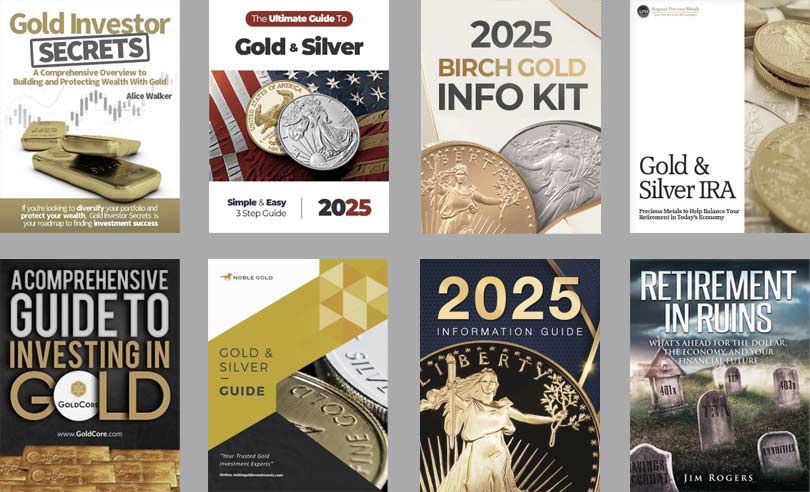Well, that didn’t take long.
 Bullion.Directory precious metals analysis 30 September, 2024
Bullion.Directory precious metals analysis 30 September, 2024
By Mike Maharrey
Journalist, analyst and author at Money Metals Exchange
In April, Zimbabwe introduced a gold-backed currency in an effort to stabilize the country’s financial system. Less than six months later, the Reserve Bank of Zimbabwe has already devalued the new money.
I hate to say, “I told you so,” but, well, I told you so.
When Zimbabwe launched the ZiG, I warned that a gold-backed currency would be a great step but would not solve the country’s problems unless the government changed its ways.
It appears that hasn’t happened.
The ZiG, also known as Zimbabwe Gold, is a structured currency backed primarily by 2.5 tons of gold along with other forex reserves including, $100 million USD.
As the Zimbabwe African National Union-Patriotic Front (Zanu PF) explained, “Given that Zig is a structured currency deriving its value from gold (a valuable asset), it is likely to maintain a stable value, ceteris paribus. The value of zig against USD, therefore, appreciates or depreciates as gold price increases or decreases at the international market. Given the stability of gold price, the zig is more likely going to be stable in value currency.”
The Zimbabwe government introduced the ZiG at a rate of 13.56 per dollar. On Sept. 26, the currency was quoted at 14 ZiG per dollar. The next day, the valuation jumped to 24.4 ZiG per dollar, a 43 percent devaluation.
The Reserve Bank of Zimbabwe also raised its benchmark interest rate from 20 percent to 35 percent in an effort to strengthen the local currency.
Price inflation spiked from 1.4 percent in August to 5.8 percent in September.
Governor John Mushayavanhu wouldn’t confirm the Reserve Bank of Zimbabwe had devalued the ZiG, but he did say the central bank took “a number of steps” to combat inflation, including allowing “greater exchange rate flexibility, in line with the increased demand for foreign currency in the country.”
The ZiG was the sixth government attempt to shore up the Zimbabwean currency since 2009.
The country has a long history of rampant inflation. The Zimbabwean dollar (RTGS) lost about 800 percent of its value against the dollar in 2023 alone.
Hyperinflation totally wiped out the value of the Zimbabwe dollar in the early 2000s. In 2009, the government abandoned its currency and adopted foreign currencies – primarily the U.S. dollar (or, more accurately, the Federal Reserve Note).
The African nation reintroduced the Zimbabwe dollar, also known as the bond note, in 2016. It was to be backed by the U.S. dollar loan facility. Then-central bank governor John Mangudya swore the new Zimbabwe dollar would remain on par with the greenback. But the bond note crashed when the government once again began printing excess money. By mid-July 2019, price inflation had increased to 175 percent.
The ZiG was supposed to slam the door on the country’s monetary malfeasance. Backing currency with a hard asset theoretically limits money creation. The government shouldn’t create more notes unless it gets more gold. A gold standard puts a natural brake on monetary expansion.
But merely pegging a currency won’t do the trick if the government can’t resist the temptation to arbitrarily change the peg. A gold standard only works when government officials leave it alone. And as Americans learned in the 1930s, governments can and will quickly unravel a gold standard when it suits their purposes.
With the dollar tied to gold, the Federal Reserve couldn’t significantly increase the money supply during the Great Depression. It wasn’t able to simply fire up the printing press as it can today. The Federal Reserve Act required the central bank to hold enough gold to back at least 40 percent of the notes in circulation.
But, a lot of Americans were redeeming paper dollars for physical gold because they were losing faith in the paper currency. As a result, the central bank was low on gold and up against the limit.
This put President Franklin D. Roosevelt between a rock and a hard place. He wanted the Fed to increase the money supply and support government spending, but this was limited by this partial gold standard.
To solve the problem, FDR took several steps to untether the dollar from gold, including attempting to remove most gold from private ownership. He also raised the dollar peg, just like Zimbabwe just did.
It appears the Zimbabwe government is going down the same path — again.
The bottom line is the ZiG is only as strong as the government’s commitment to maintain the gold backing.
Just six months into the experiment, it’s already clear that commitment isn’t very strong.
Mike Maharrey


Mike Maharrey is a well-known author, journalist, financial analyst and writer at Money Metals Exchange, one of our top-rated US dealers and two-times winner of Bullion Dealer of the Year
He holds a BS in accounting from the University of Kentucky and a BA in journalism from the University of South Florida. Mike also serves as the national communications director for the Tenth Amendment Center and the managing editor of the SchiffGold website.
This article was originally published here
Bullion.Directory or anyone involved with Bullion.Directory will not accept any liability for loss or damage as a result of reliance on the information including data, quotes, charts and buy/sell signals contained within this website. Please be fully informed regarding the risks and costs associated with trading in precious metals. Bullion.Directory advises you to always consult with a qualified and registered specialist advisor before investing in precious metals.











 Material provided on the Bullion.Directory website is strictly for informational purposes only. The content is developed from sources believed to be providing accurate information. No information on this website is intended as investment, tax or legal advice and must not be relied upon as such. Please consult legal or tax professionals for specific information regarding your individual situation. Precious metals carry risk and investors requiring advice should always consult a properly qualified advisor. Bullion.Directory, it's staff or affiliates do not accept any liability for loss, damages, or loss of profit resulting from readers investment decisions.
Material provided on the Bullion.Directory website is strictly for informational purposes only. The content is developed from sources believed to be providing accurate information. No information on this website is intended as investment, tax or legal advice and must not be relied upon as such. Please consult legal or tax professionals for specific information regarding your individual situation. Precious metals carry risk and investors requiring advice should always consult a properly qualified advisor. Bullion.Directory, it's staff or affiliates do not accept any liability for loss, damages, or loss of profit resulting from readers investment decisions.

Leave a Reply